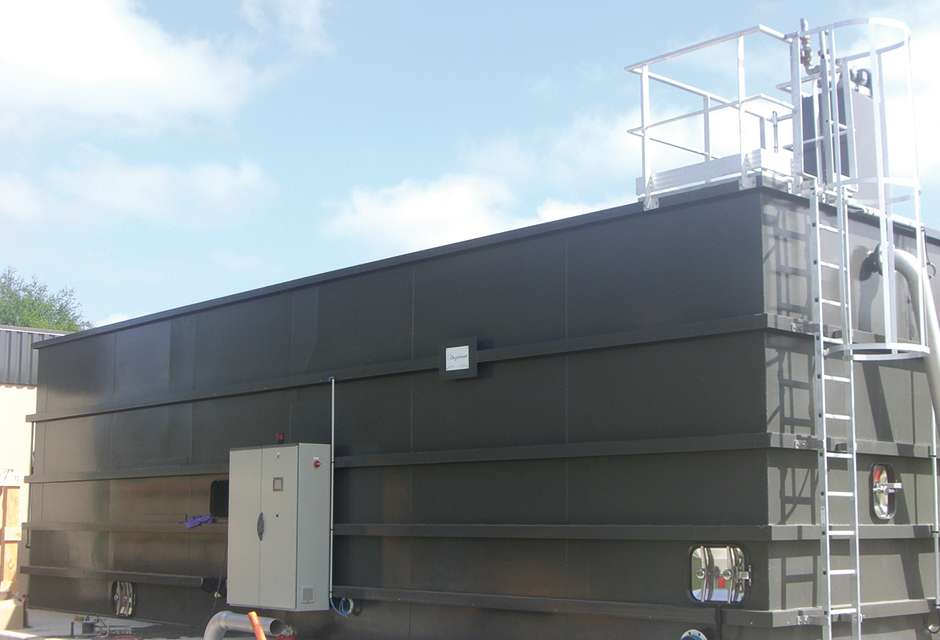pulsed sludge blanket clarification – UCD® puls

• Surface water
operating principle:
- coagulation: Addition of a coagulant in order to increase the size and cohesion of the floc.
- sludge blanket: Formation of a pulsed sludge blanket through a vacuum chamber equipped with a vacuum pump and an automatic system for pressure regulation.
- Entry of coagulated water into the contact chamber upstream of the vacuum chamber.
- Injection of the flocculation agent (polymer) during transfer to the vacuum chamber The flocculation process ensures the formation of a floc of a homogeneous size.
- Formation of the sludge blanket in the clarifier between the distribution pipes and the lamellar modules. The decanted water flows out by rising through the blanket.
- The excess sludge is recovered by overflow in an internal concentrator and is periodically discharged by opening a gravity purge valve. Accelerated separation of the water and flocs by passing them through lamellar modules.
- Recovery of the clarified water by perforated submerged collectors.
applications
- High turbidity (up to 1,000 NTU)
- Water with a high content of organic matter or pesticides
key figures
- Turbidity of clarified water around 1 - 3 NTU
- Up to 60% TOC abatement in the Pulsatube® version, up 80% in the Pulsazur® version (PAC injection)
- Low energy consumption (0.5 kW for the largest model)
- Possibility of adding bilayer gravity filters
- Turbidity of filtered water in accordance with current drinking water standards
Bookmark tool
Click on the bookmark tool, highlight the last read paragraph to continue your reading later












